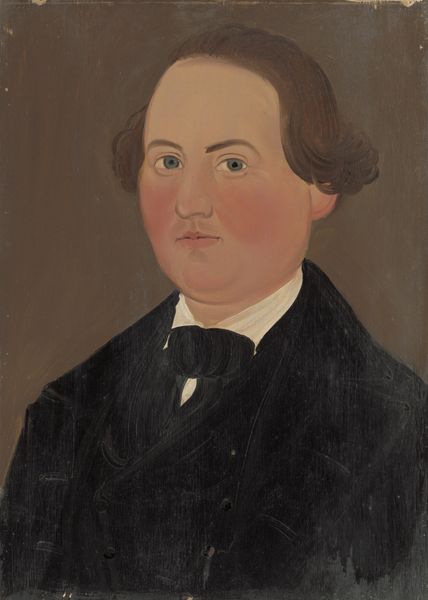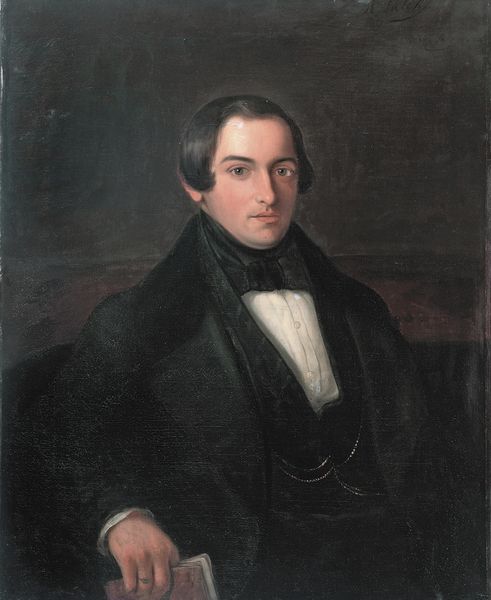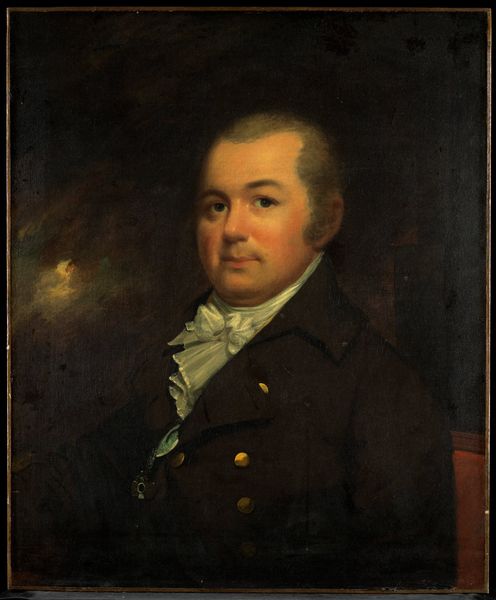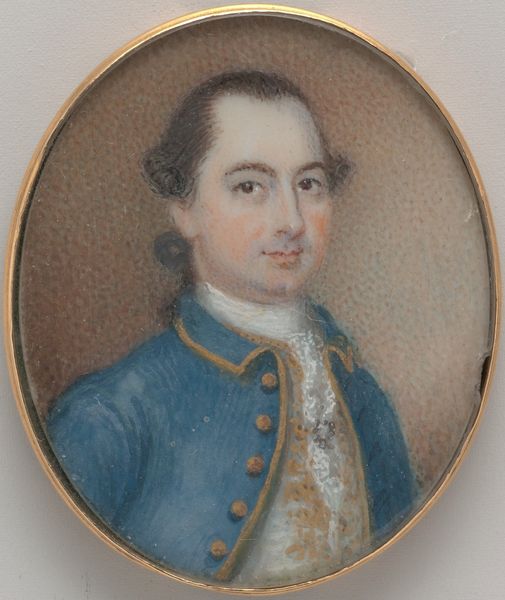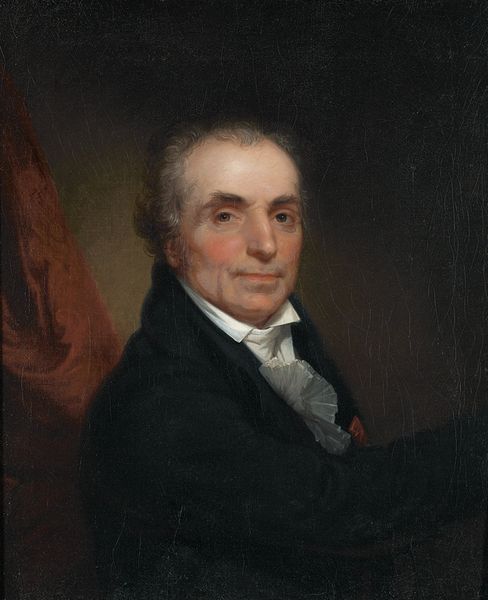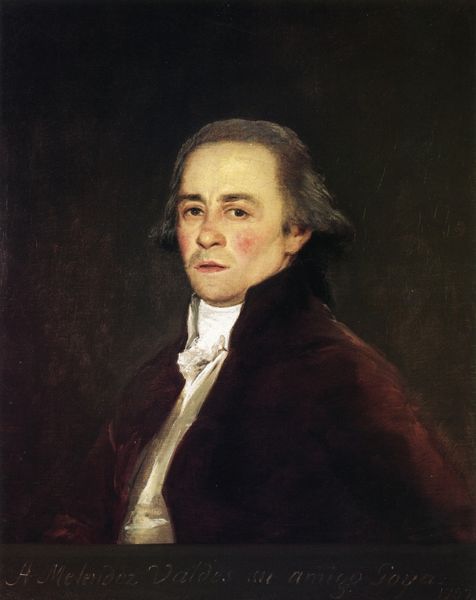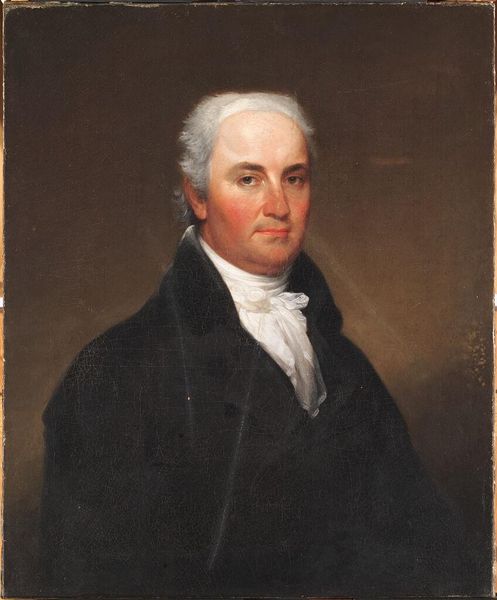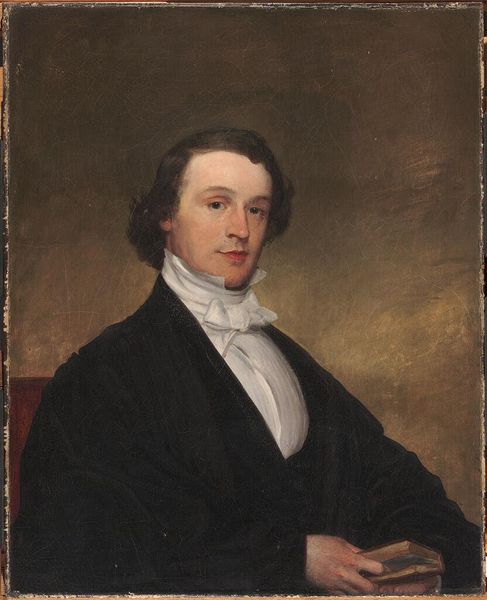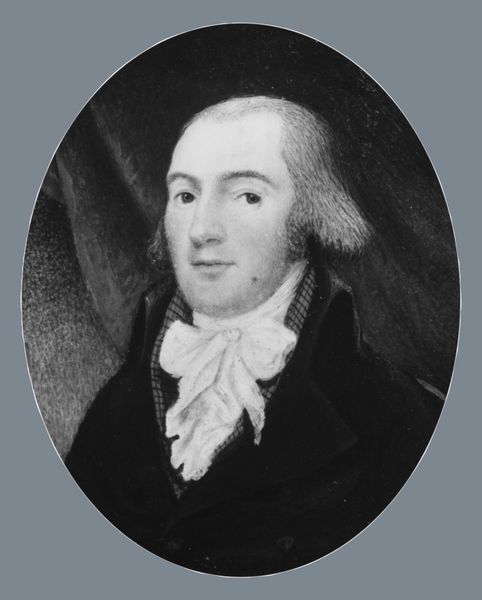
painting, oil-paint
#
portrait
#
neoclacissism
#
painting
#
oil-paint
#
romanticism
#
history-painting
#
academic-art
Dimensions: overall: 76.2 x 63.5 cm (30 x 25 in.) framed: 81.9 x 69.5 x 3.8 cm (32 1/4 x 27 3/8 x 1 1/2 in.)
Copyright: National Gallery of Art: CC0 1.0
Curator: Look at this compelling portrait of Asa Benjamin, painted in 1795 by William Jennys. The painting is done in oil on canvas. Editor: My initial impression is…reserved. The man's gaze is direct, yet there's an air of caution about him, perhaps reflecting the times. Curator: Precisely. Considering its context, it's fascinating to examine what his direct gaze communicates. In this post-revolutionary period, portraits like this signified social standing, and perhaps more subtly, participation in nation-building. Note the plain background, a classic Neoclassical style choice. Editor: That austere background certainly reinforces that sense of civic responsibility, doesn’t it? The almost stark contrast with the white frill of his jabot draws attention to the face and the subtle flush of his cheeks. Are we meant to find him sympathetic, admirable? Curator: Absolutely. That careful placement serves a purpose. Neoclassicism pulled from the imagery of the Roman Republic, creating a visual language around civic virtue. The somber colors enhance the idea that citizens of this new republic should be serious, committed individuals. But his eyes tell another story. Editor: They hint at something beyond duty… vulnerability, even? It's an interesting contrast, hinting at Romanticism's burgeoning influence, wouldn't you say? The hint of an individual behind the official portrayal. Curator: Good point. The tension between Neoclassical stoicism and Romantic emotionalism really makes you consider what visual cues create the meaning we perceive. Editor: Exactly. The image speaks volumes not just about Asa Benjamin, but also about the society constructing itself around him and what they expected from citizens. And through repeated viewings the imagery seeps into cultural consciousness, doesn't it? Curator: Indeed. The weight and authority implied by this work, the history carried through symbols, still shape ideas today. I am always intrigued at how potent images are for that. Editor: Well, and seeing how notions of what leaders or citizens are supposed to be have morphed through the eras is really what fascinates me most. Food for thought.
Comments
No comments
Be the first to comment and join the conversation on the ultimate creative platform.
